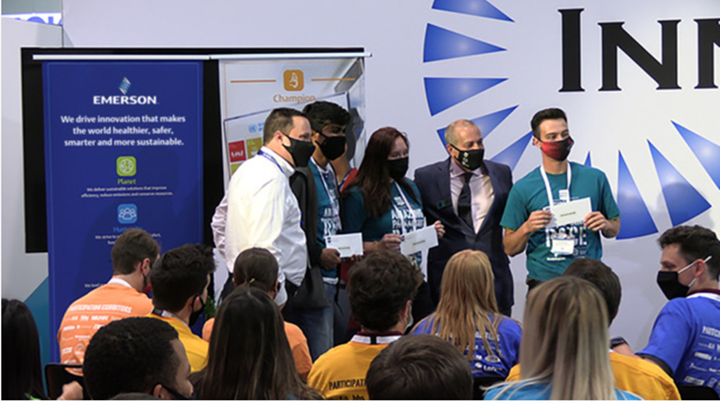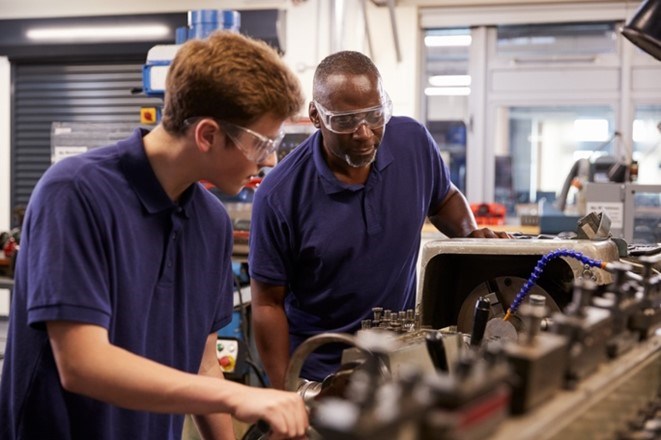Aligning With Purpose: Promoting Engagement and Retention in a Changing Workforce
How companies are considering the employee life cycle and transforming the work experience to better support their people
According to a recent global survey by Deloitte, employee engagement and retention are among the leading challenges faced by organizations today. In February 2022, more than 4.4 million people left their jobs – many moving on to find better pay and greater work-life balance.
While compensation and remote opportunities continue to be important to jobseekers, so too is working for an employer who aligns with their personal goals and values. Jobseekers are looking for an employer who fosters a modern work culture of diversity, equity and inclusion. For today’s workforce, this means seeking companies with higher purpose and values that support their people.
Companies who are deeply listening to what matters most to today’s workforce are modernizing, revitalizing and transforming their cultures and leading with purpose. Some, including Emerson, have even developed intentional frameworks to reimagine their organizations and commit to meaningful employee experiences. When it comes to engagement and retention, the employee experience is more important than ever before. How we choose to engage and work with our people in their first year can determine how long they choose to stay.
Here are five ways that companies can lead with purpose to better support their people, transform the employee experience and promote engagement and retention.
Providing flexibility
Today’s job candidates, specifically those looking to fill roles beyond the factory floor, often will not engage with an employer who doesn’t offer a hybrid work option. Since the onset of the COVID-19 pandemic in 2020, traditionally on-site roles have become increasingly remote. As a result, employers are having to rethink how they engage and work with new employees–both remote and hybrid–especially during the first year. Many companies see their highest volume of turnover in years zero through three, which means they must focus more attention on onboarding strategies and support for remote and hybrid employees.
To stay competitive and attract new talent, companies may also need to assess individual roles within their organizations and identify which are appropriate for hybrid or remote performance. This new work policy must factor in an employee’s physical environment as well as the scheduling, tools and processes required to do the job both on- and off-site. The goal is to find the common ground between what employees define as essential to their well-being and what their employer defines as successfully fulfilling the responsibilities of the role.
Investing in meaningful education and training
With the continuing exodus of retiring engineers, industrial and manufacturing companies are getting smarter about capturing and transferring the expertise preparing to walk out the door. Providing in-house training and taking advantage of available resources, such as vendor training materials, application-based web tools, and live online support, are some of the tools that are helping to bridge the gap between knowledge and experience. Two new education and training strategies are also proving fruitful in the effort to frontload the skills and readiness of new hires: hiring for competencies and designing intentional internships.
In the past, employers frequently hired engineers based largely on their years of experience. But as seasoned engineers retire and the numbers left behind who are poised to take their place have dwindled, a new approach to hiring emerged that better leverages the talents of less experienced engineers. Instead of evaluating engineers based on years under the belt, employers are now shifting attention to candidate competencies and are enhancing those key skills and attributes with training and mentoring to make up for the shortfall of experience.

Engineering students from colleges around the US competed in the Amazing Packaging Race presented by Emerson. The contest encourages teachable moments, creates teamwork and a positive networking opportunity.
Photo Credit: All images courtesy Emerson
Another tactic that shifted to focus on engagement and retention is the internship. The old internship stereotype involved companies hiring students, typically for a summer or a semester, and “keeping them busy.” Now, in the midst of a pandemic and continuing competition for skilled labor, companies are becoming much more intentional about their internship programs because they see them for what they really are: an opportunity to attract, engage and potentially hire the next generation of employees.
Preparing future leaders
Developing the next generation of leaders within a company means engaging and retaining potential candidates from inside company ranks as well as from outside sources like educational institutions. For current employees, leadership development means establishing a career path that includes opportunities for professional development, mentorship and advancement, which are critical factors in long-term retention rates. For students and recent graduates, company-sponsored education and training opportunities are the precursors to leadership development at the beginning of the career path.

Leadership development programs help establish a career path that includes opportunities for professional development, mentorship and advancement—critical factors in long-term retention rates.
Engaging with higher education is essential for the modern manufacturer to ensure each new generation of the workforce is keeping up with technological advances. Working with nearby colleges and trade schools allows companies to inform and guide higher education programs in selecting the best equipment and training techniques to prepare their students to enter the workforce with relevant and immediately applicable skill sets.
An example of this training is preparing students for careers as maintenance technicians or electrical and instrumentation technicians. These students now have opportunities to train using hybrid hands-on/video/VR platforms in which devices, fully functional processes, distribution control systems and asset management systems are all part of the equation. They can watch a video and learn how to calibrate a device for flow, measurement or control while practicing on the device. These training scenarios allow students to see the big picture of how data flows from the process into other higher levels of manufacturing, such as distributed control systems and manufacturing execution systems. Platforms such as this have proven highly successful in preparing students to be future leaders in their fields.
Prioritizing well-being and diversity, equity and inclusion initiatives
Work flexibility isn’t the only way employers are expected to care for their people, and the expectation of caring goes well beyond the needs of the employees.
The past two years have shined a spotlight on many issues related to individual and collective well-being. Dealing with mental health crises and the stress of the pandemic, plus confronting larger social issues such as racism and inequality, have caused people at all levels of the workforce to reevaluate how and where they spend their time and energy. These issues are producing a generation of workers that expects their employers to recognize their needs as a whole person within society, not just as an employee within a building. For employers, this means providing support and resources for individual wellness and family needs, as well as committing to larger initiatives that promote diversity, equity and inclusion.
Supporting our communities
Supporting collective wellbeing extends into the local community. Companies that support social services, charities and community improvement projects through donations, scholarships, fundraisers and volunteer time are often viewed more favorably by job candidates. Involvement and investment in the local community also builds relationships and attracts members of the local workforce who are more likely to align with company values and culture. For large companies, local community outreach can help humanize their brand as well.
Communities also includes the physical places themselves. With a heightened awareness of climate change, depleting natural resources and other environmental issues of our time, current generations of workers are increasingly looking to their employers as an extension of their own ideals and practices of responsible environmental stewardship. This expectation is particularly high for manufacturing and industrial companies, which are often the focus of negative news about waste, pollution and environmental misdeeds.
To embrace corporate responsibility in ways that better align with the expectations of potential job candidates, companies are making more observable, measurable efforts toward sustainability. These sustainability efforts happen both in their own operations and by aiding customers with personal sustainability goals as they relate to the products and services their companies supply. Workers also expect evidence of sustainability beyond the company itself. This prompts companies to evaluate sustainability in other areas of their business such as supply chains and material sourcing. In addition, companies can look for opportunities for local and global partnerships with other companies and organizations that can help advance their sustainability efforts.
Breaking new ground
Amid great waves of hiring and quitting, candidate expectations are changing, and it’s up to employers to change along with them if they want to keep the workers they have today and secure a stronger workforce tomorrow. Companies that are serious about engaging and retaining talent are making sweeping changes to the ways that they hire, train and support employees and to the ways they engage with their local and global communities to promote sustainability, diversity, equity and inclusion.
Ultimately, it’s up to employers to find ways to lead with purpose and support employees both on the job and in their lives outside of work. Company leadership must lead with empathy and create a space where employees feel safe expressing how they are doing, even when it appears to have nothing to do with their role at work. Listening to and caring for employees in this way can be a major contributor to overall job satisfaction and the single most important factor in an employee’s long-term retention.

Scott Pilkington is vice president of human resources, discrete and industrial, for Emerson, a global technology and engineering company providing innovative solutions for customers in industrial, commercial and residential markets.
RELATED CONTENT
-
What’s Your Temperature?
For decades, valve manufacturers have provided the maximum recommended working pressures and temperatures for their products, based on the materials used in the pressure-containing parts.
-
New API Standard for Globe Valves
While the American Petroleum Institute (API) and other organizations published a variety of valve standards covering gate, ball, check, butterfly and plug valves for decades, the first for globe valves came out in 2013.
-
Misconceptions Regarding Control and Isolation Valve Standards
All on/off isolation valve standards are not created equal and cannot be applied unilaterally to all valves.










 Unloading large gate valve.jpg;maxWidth=214)